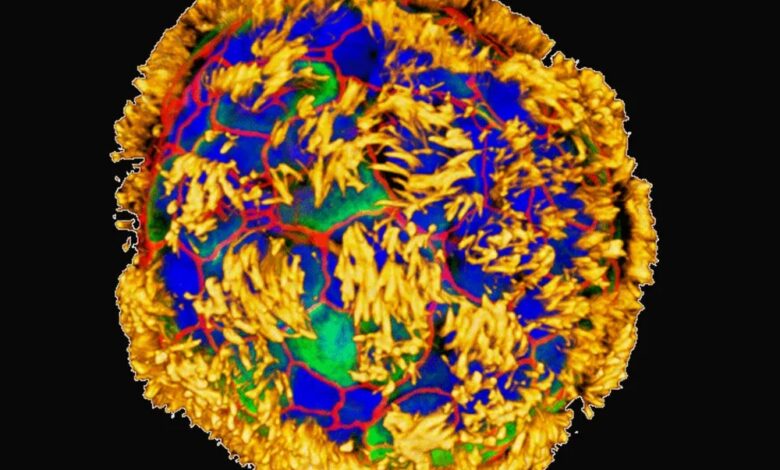
A colored image of an anthrobot. Hairlike structures called cilia enable the bots to move. Image Credit: Gizem Gumuskaya / Tufts University
HealthTechnology USAThese Amazingly Tiny Robots Could Heal Humans
A team of scientists have developed anthrobots, tiny groups of human cells capable of moving on their own, that have the potential to pave the way to revolutionary personalized medicine.
“Once we understand what cell collectives are willing and able to do, then we can begin to control that not just for stand-alone bots, but for regenerative medicine,” says Michael Levin, a co-author of both the old and new work and a biologist at Tufts University.
To develop the anthrobot, scientists built on their findings from the xenobot, the first robot able to stitch together frog embryo cells. These bots can assemble themselves, move across surfaces, and travel through liquid. Xenobots can’t treat humans, but anthrobots could. Inspired by sheets of human neurons, each anthrobot starts with a single cell from an adult human lung. Then, it grows into a multicellular biobot after being cultured for two weeks. The bots were tested for healing wounds. Within days after being introduced to the site of a scratch, made in a layer of neurons in a dish, neurons regrew, bridging the gap created by the wound.



